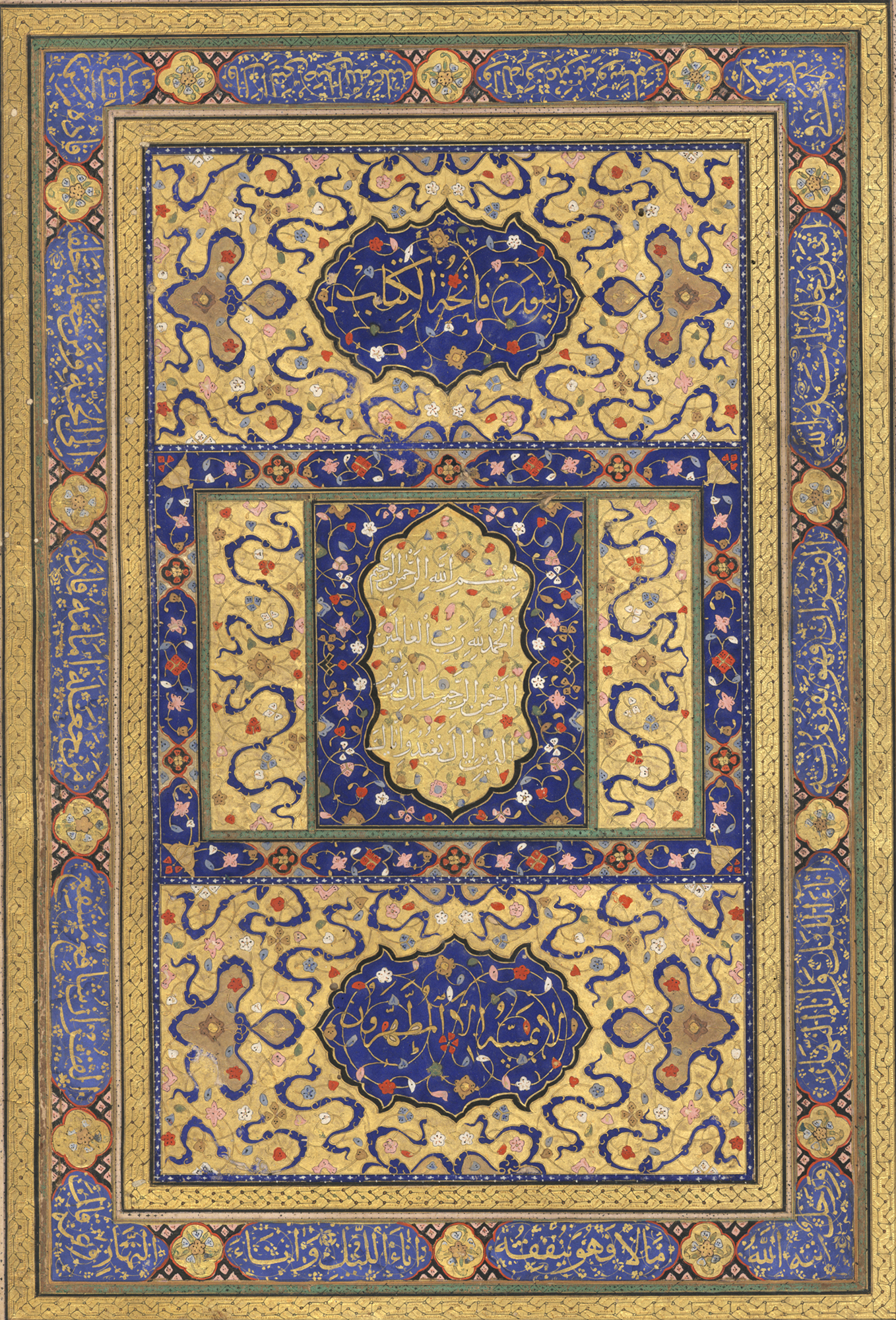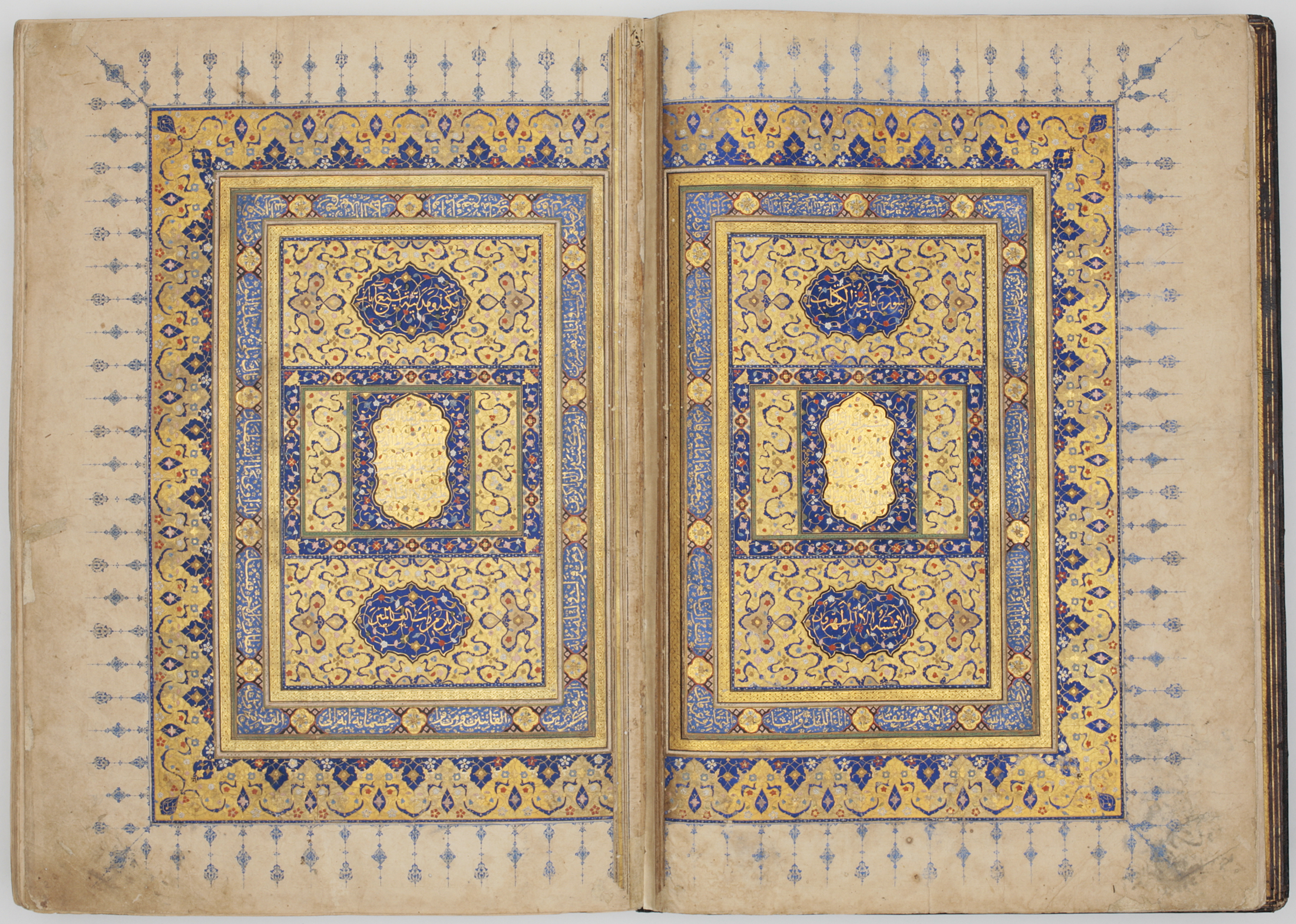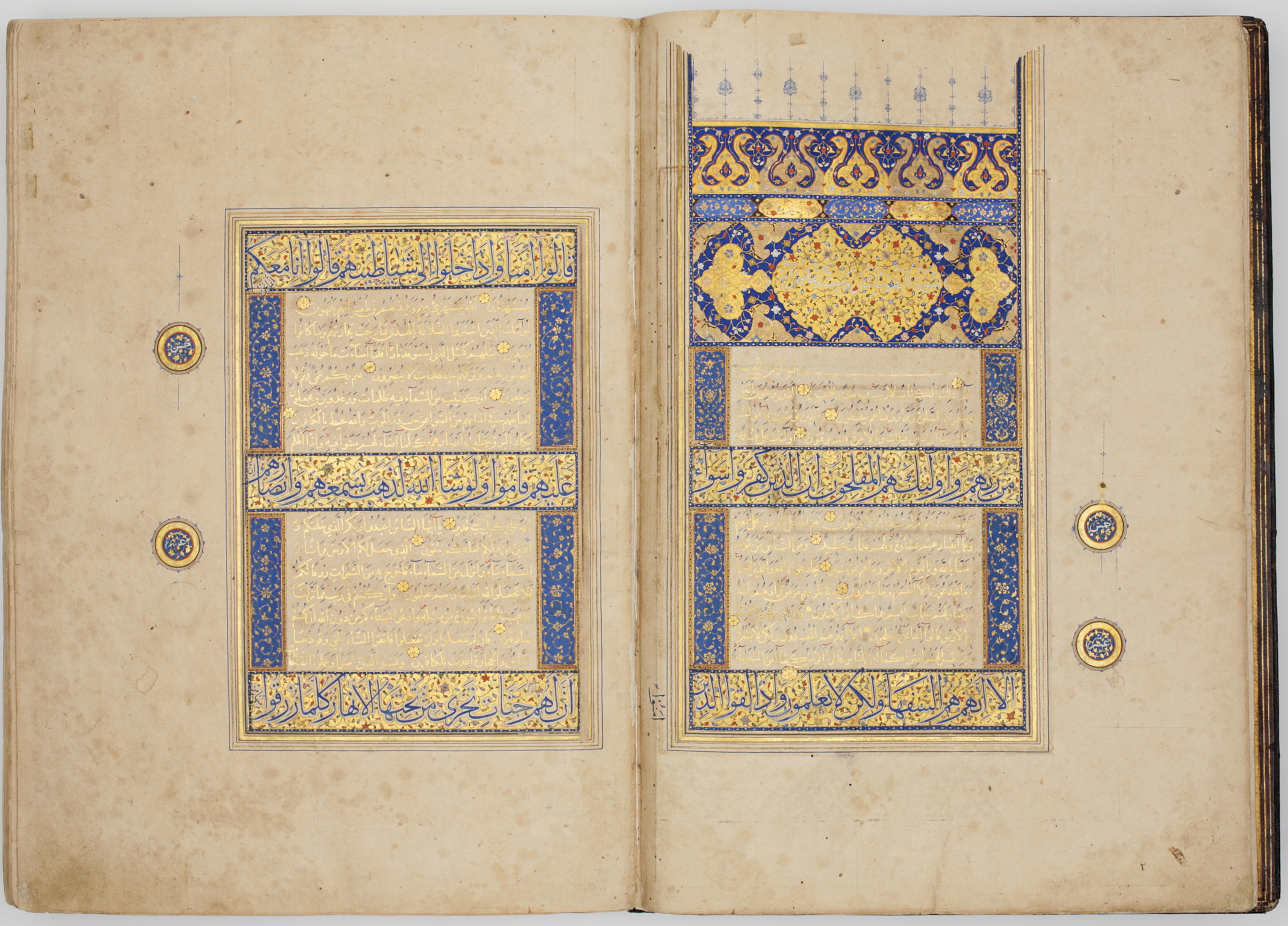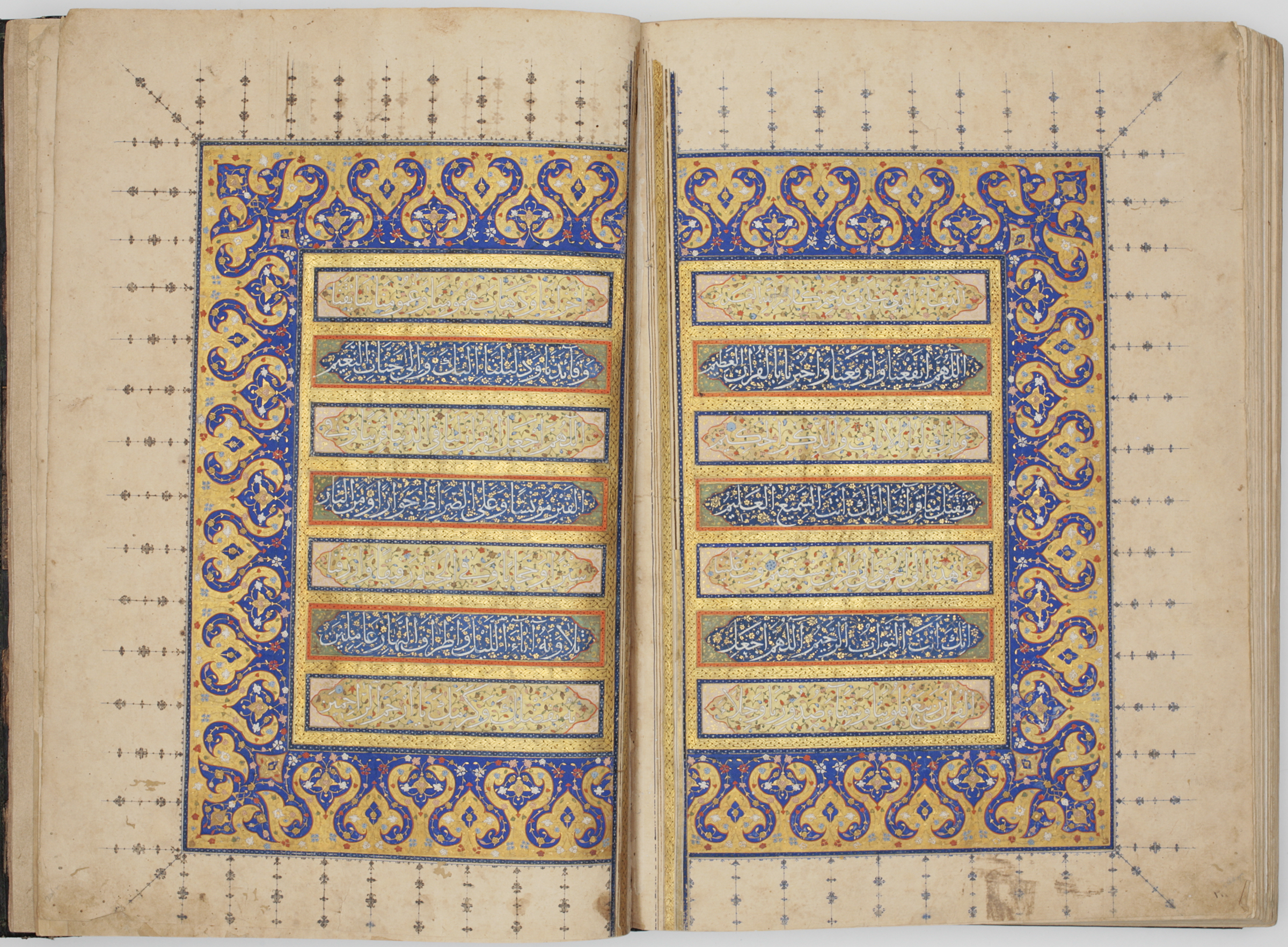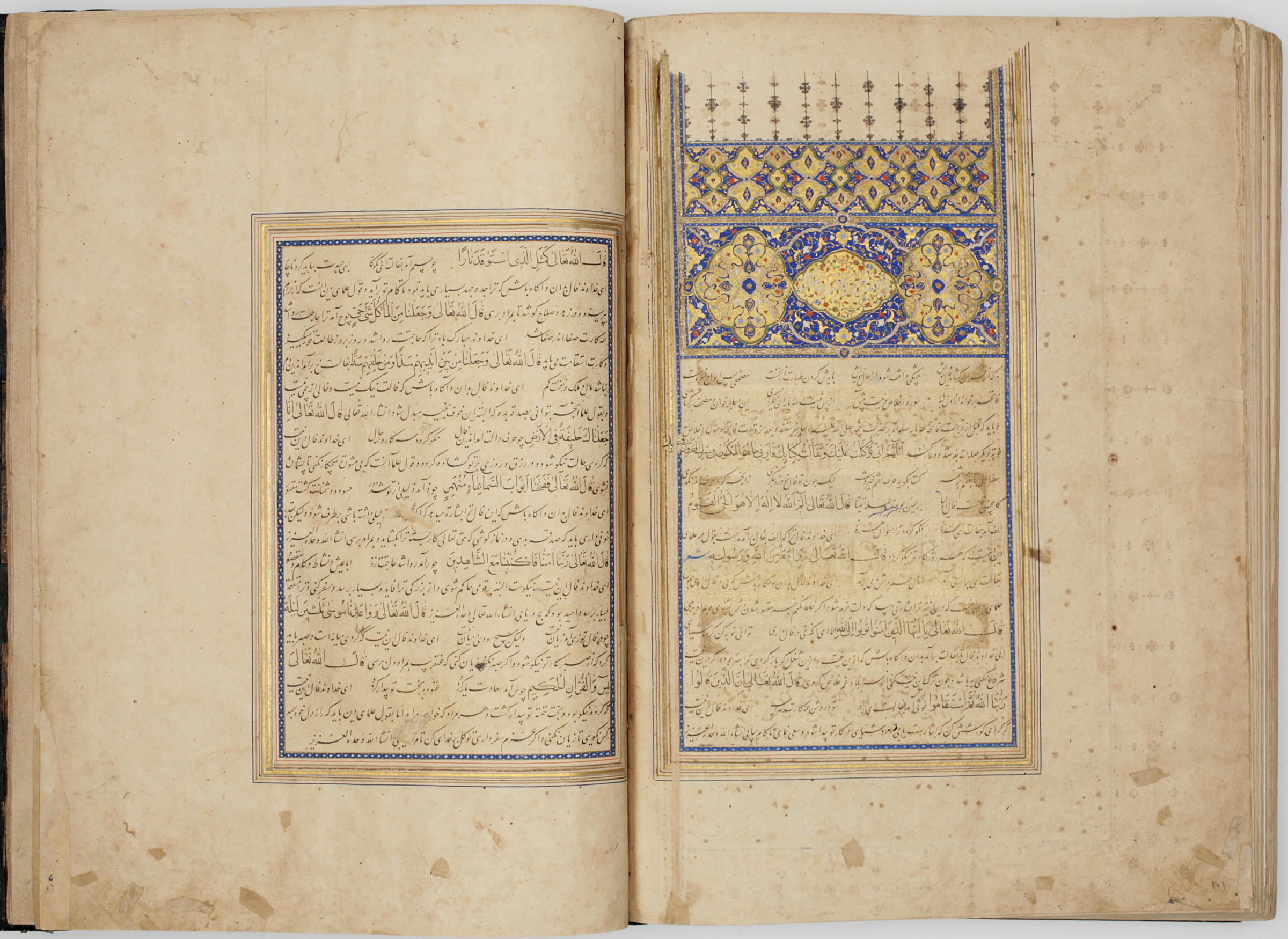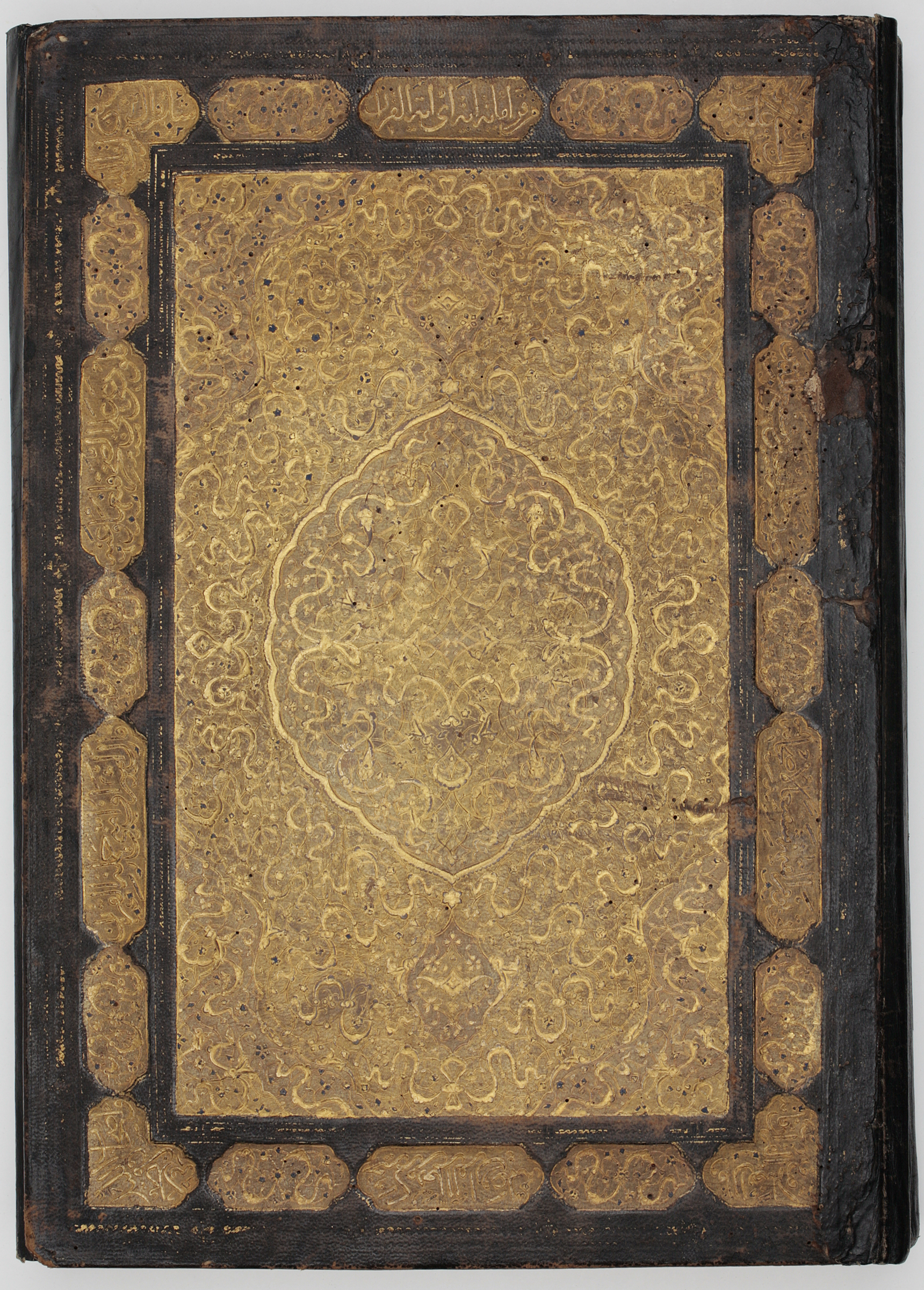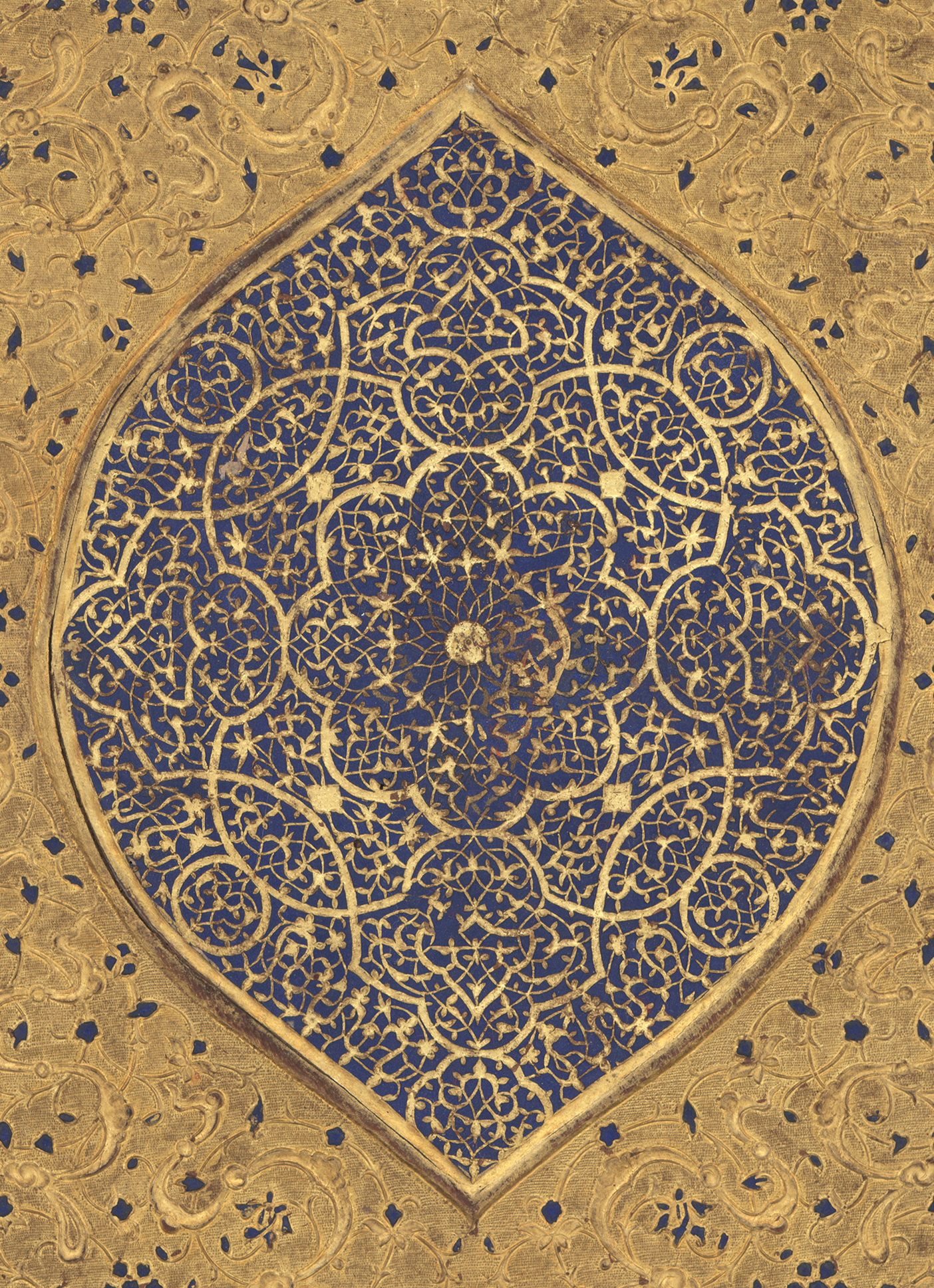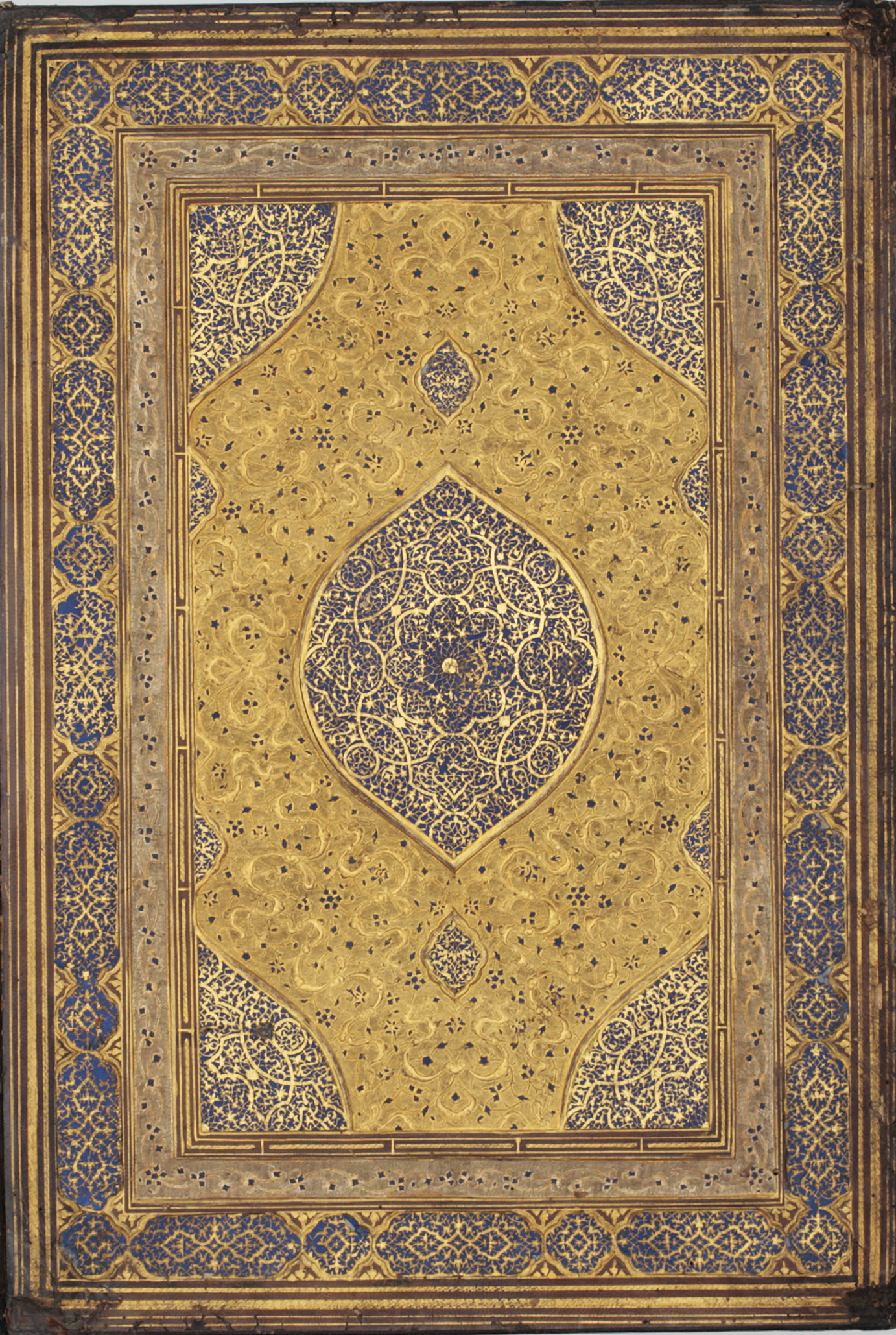 Print Page
Print Page
 Print Page
Print Page
Location: Iran, Shiraz or Qazvin
Materials: ink, gold and opaque watercolour on paper; contemporary binding of stamped and gilt leather; doublures of stamped and gilt leather and leather filigree
Dimensions: 202 folios; 42.7 x 30cm
Accession Number: QUR 729
Other Notes:
The exceptional size and splendid quality of the binding, illumination and calligraphy all suggest that this Qur’an was a royal commission, very probably for Shah Tahmasp himself. A note, possibly in the hand of Shah Jahan (r 1627–1658), and the seals of Awrangzeb (r 1658–1707) and his successor Shah ‘Alam (r 1707–1712) show that it was later a prized possession of the imperial Mughal library.
The opening text spread (folios 1b–2a) contains the verses of surah al-Fatihah (I) and is sumptuously illuminated in lapis blue and gold, with the Qur’anic text in a central panel, and head- and footpieces in a frame of hadith texts in oblong cartouches in gold on blue. The crenellated border makes prominent use of cloud scrolls, sometimes combined into elaborate clips. The second surah, al-Baqarah, commences with a fine headpiece, with the lines of muhaqqaq written over a decorated gold ground (folios 2b–3a). Surah headings are in gold thulth and are set in delicately and variously illuminated panels, and the Qur’anic text is copied in gold throughout the manuscript.
The Qur’anic text is followed by a prayer to be recited on concluding a reading of the Qur’an (folios 200b–201a), and the final pages (folios 201b–203a) contain a falnamah, a treatise on how to use the Qur’an for divination. It is written in a fine nasta‘liq hand with Qur’anic quotations in naskh.
Script:
main text copied in muhaqqaq and naskh scripts, incidentals in thulth; 17 lines to the page
Bibliography:
D. James, After Timur. Qur’ans of the 15th and 16th Centuries, The Nasser D. Khalili Collection of Islamic Art, volume III, London 1992, cat.43, pp.172–81.
J.M. Rogers, The Arts of Islam. Masterpieces from the Khalili Collection, London 2010, cat.252, pp.216–17.
